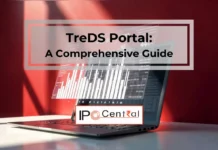Embassy Office Parks REIT has a good pedigree and is backed by India’s Embassy Property Developments Pvt. Ltd and global private equity giant Blackstone Group LP. The REIT – India’s first offering of its kind to list on stock markets – aims to raise as much as INR4,750 crore from its IPO which is priced at INR299 – 300 per unit. This includes INR876 crore for strategic investors. Excluding the portion for strategic investors; 129,556,000 shares will be offered in the IPO. Should you invest in Embassy Office Park REIT IPO? This is the question we will be exploring in our review of Embassy REIT IPO.
Investors can place bids for minimum 800 units and in multiples of 400 units thereafter. This means the minimum application amount is nearly INR240,000 which makes the equation in favor of non-retail investors. The IPO will open on 18 March and will close on 20 March 2019.
Here are some important details about India’s first REIT IPO:
|
Embassy Office Parks REIT IPO details |
|
| Subscription Dates | 18 – 20 March 2019 |
| Price Band | INR299 – 300 per unit |
| Total IPO Size | 129,556,000 units (INR3873.72 – 3,886.68 crore) |
| Minimum Order Quantity | 800 units |
| Market Lot | 400 units |
| Face Value | NA |
| Non institutional Investor portion | 25% |
| Listing On | NSE, BSE |
Embassy REIT IPO Review: Debt reduction
The IPO proceeds will be primarily used towards reducing debt. Following the utilisation of the IPO proceeds, the company’s total indebtedness is expected to be less than 15% of its market value. Here is how the funds are expected to be used:
- Partial or full repayment or pre-payment of bank/ financial institution debt of certain Asset SPVs and the Investment Entity – INR3,710 crore
- Payment of consideration for acquisition of the Embassy One Assets currently held by EODPL – INR460 crore
- General Purposes
Embassy REIT IPO Review: Focus on office spaces
Blackstone and Embassy established the joint venture in 2012 but it was only in March 2017 that the venture was molded in the shape of a REIT.

Embassy Office Park REIT has a portfolio of 33 million sq ft of office space spread across Bengaluru, Pune, Mumbai and Noida. As of 31 December 2018, these properties included seven office parks and four prime city-centre office buildings. The group is also developing properties in Chennai and Hyderabad.
In its offer document, the company said its portfolio has an occupancy rate of 95% and has more than 160 tenants. A majority of these tenants are in the IT space and include top names such as Google, Microsoft, Cognizant, JP Morgan. The company has long-term contracted rentals and these high quality names ensure that its properties are leased at a premium on the ongoing rents in the area.
Read Also: All about Embassy Office Parks REIT IPO
Embassy Office Park REIT IPO Review: Improving financial performance
Embassy’s tall claims are not hollow and this is reflected in the company’s growing topline and bottomline. Its revenues grew in each of the last three years and the REIT is on its way to post another blockbuster performance this year. Similar is the story with profits which have expanded from INR93.2 crore in FY2016 to INR285.1 crore in the first nine months of FY2019. Although net income is not the best indicator of financial health when it comes to REITs, this is nevertheless a helpful parameter to gauge if a REIT is doing fine or not (more on this later).
|
Embassy Office Parks REIT’s financial performance (in INR crore) |
||||||
| FY2016 | FY2017 | FY2018 | 9M FY2019 | |||
| Total revenues | 1,575.4 | 1,645.6 | 1,766.3 | 1,493.2 | ||
| Profit after tax | 93.2 | 177.1 | 256.9 | 285.1 | ||
| Net margin (%) | 5.9 | 10.8 | 14.5 | 19.1 | ||
Embassy REIT IPO Review: First of its kind, should you invest?
Embassy Office Park is India’s first REIT to get listed and there is no parallel of similar securities so it is natural for investors to observe this instrument with amusement. Essentially, REITs allow investors to own a piece of real estate market without actually buying a piece of land or developing the same. Since regulations have mandated REITs to distribute 90% of their net distributable cash flow (NDCF) to unit holders, REITs are intended to be income generating assets. Quite naturally, this also means that one shouldn’t expect much of capital appreciation in these instruments.
Read Also: MSTC IPO Review: Rags (scrap) to riches?
As mentioned above, net profit and financial ratios based on profitability are not the best ways to value REITs because profitability is often low due to non-cash charges like depreciation and amortization. On the contrary, properties often experience appreciation with time. This is where the concept of NDCF makes its way as the central figure in a REIT’s valuation process.
|
Key figures for Embassy Office Parks REIT |
||
| Metric | Details | FY2019 |
| NDCF (INR crore) | 1,633.6 | |
| EBITDA (INR crore) | 1,517.3 | |
| NOI (INR crore) | 1,614.1 | |
| Post issue units (crore) | 77.2 | |
| NDCF/unit (INR) | Proxy to EPS | 21.2 |
| Price/NDCF | Proxy to P/E | 14.2 |
| Distribution to unit-holders (INR crore) | 90% of NDCF | 1,470.2 |
| Distribution per unit (INR) | 19.1 | |
| Yield (%) | On issue price of INR300 per unit | 6.4 |
As explained in the table above, the REIT is likely to generate NDCF of INR1,633.6 crore in FY2019, based on the projections provided. By nature, NDCF is the figure similar to earnings in the traditional valuation model and REITs are required to distribute at least 90% of this to unit-holders.
Further doing the math with 77.2 crore post-issue units, we arrive at the figure of INR19.1 per unit investors can hope to get annually in the form of dividends (Embassy Office Park intends to declare dividends quarterly).
Considering the issue price of INR300 per unit, the annual yield turns out to be 6.4%. Now this yield might not be great but it needs to be seen in conjunction with the prospects of capital appreciation which are expected to be moderate but steady. The prospectus lists the NAV of the REIT’s assets at INR376 per unit which means that the issue is priced at a discount to the underlying value of the assets. However, this NAV is based on an assessment by CBRE and need not be taken as sacrosanct.
This is, of course, open to interpretation and investors with different risk profiles will see these figures differently. One may very well argue that the dividend yield is hardly better than tried and tested bank FDs as income from both instruments are taxable. At the same time, there remains a real possibility of capital appreciation on account of premium tenants the REIT houses. The encouraging subscription by strategic and anchor investors is a case in point.
In conclusion, the decision to subscribe or avoid Embassy Office Park REIT IPO solely depends on one’s risk appetite. The absence of similar listed instruments in the local market just makes the assessment more difficult.






































Great analysis and now I have things in perspective. This IPO is not very attractive even after thinking there will some growth in share price. Why should I put 2.4 lakh in one place if returns are only 6%.